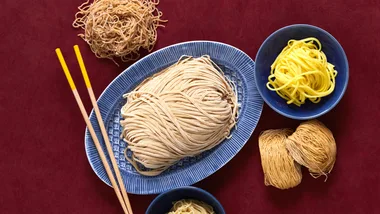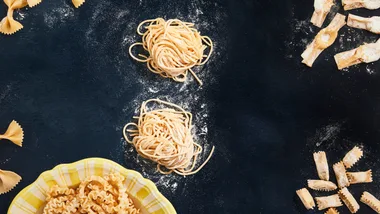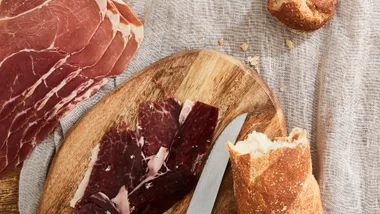A light and delicate touch is the secret to making melt-in-the-mouth pastry, writes Emma Knowles.
Pastry making is one of those kitchen tasks that even some of the most confident cooks baulk at. It seems to have an intimidating reputation. Bone out a lamb leg? No problem. Fillet a fish? Consider it done. But pastry? Uh-uh. Which is a shame, really, because it’s not so difficult, and the difference between shop-bought pastry and the handmade product is enormous. So if making pastry is one of your fears (you know who you are), now is the time to make the leap of faith.
Sweet pastry is one of the foundation stones of desserts. Master it and a world of tarts and pies awaits, from light and fruity summer tarts to rich, satisfying winter treats.
The ingredients are basic pantry staples – flour, sugar, butter and usually some kind of liquid. It could be iced water, milk, or in this case lightly beaten egg, which enriches the pastry. But the secret ingredient is a light and delicate touch.
There are several methods for making sweet pastry. Some recipes call for you to cream softened butter with sugar before stirring in flour and liquid. This method will give you a crisp pastry case, perfect for wet fillings such as custards and creams.
In other recipes (this one included), you incorporate the cold butter into the dry ingredients in a food processor (or using your fingertips) to form a fine crumb-like texture, then add the chilled liquid. In the summer months, it’s a good idea to chill the bowl and blade of your food processor. Keeping the ingredients cool will make the pastry easier to handle and help ensure a crumbly texture; you don’t want to cream the butter. Mix to only just combine, turn the mixture onto a work surface, and then bring it together quickly using a technique called fraisage. Using the heel of your hand, rub small amounts of the mixture along the work surface and continue until the mixture forms a dough. This method pulls the butter around the flour, while ensuring the dough isn’t overworked. The result? A delicate, crumbly short pastry that melts in your mouth. This style of sweet pastry is perfect for chunky, fruity fillings.
Once you’ve created a dough, knead it lightly, form it into a disc, wrap it in plastic wrap and rest it in the refrigerator. Resting is important, once when the dough is first made, and again when the pastry is rolled. This gives the gluten time to relax (giving new meaning to the phrase “chill out”), which reduces the chances of pastry shrinkage.
You can freeze the pastry at this stage; just take it out of the freezer the night before you want to use it and thaw it in the fridge. It’s great to have some stashed in the freezer so that when you want to bake a tart or a pie, you’re a step ahead in the cooking process.
This quantity of pastry is enough to make two 23cm-diameter tarts, one 25cm-diameter deep-sided pie, or 18 small tartlets (try it out on our fruit mince tarts recipe). You can re-roll the scraps without the pastry toughening up too much, which is handy for making pie lids or pastry shapes to decorate tarts.
This recipe flavours the pastry with vanilla, but you could lightly spice it with cinnamon or nutmeg instead, or give it a citrus twist with finely grated lemon, lime or orange rind. You could also replace some of the flour with ground nuts for a different texture. The options are many; just be guided by the filling you plan to use and choose a complementary flavour for the pastry. And of course you could keep it plain and simple and add no extra flavouring at all. Because a pastry as good as this speaks for itself.
Ingredients
Method
Main
Note This recipe makes about 800 gm.
Notes










